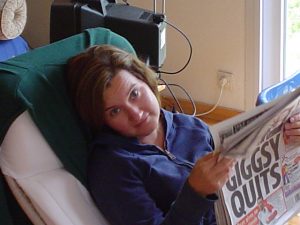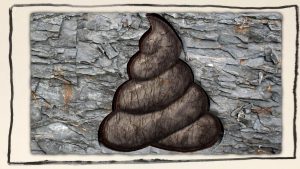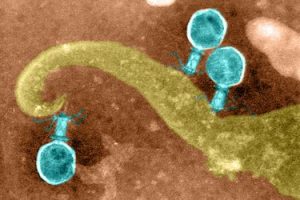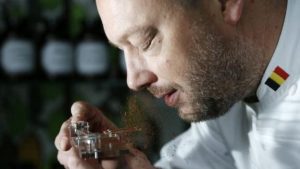Category Archives: Wacky and Weird
A bear visits a Dairy Queen, but it can pee in a cup
50-years-ago there was a Dairy Queen on the main strip where I grew up.
According to my mother, who just e-mailed me (Happy Mother’s Day, mom, you’re the best, that’s her, right, with great-grandson Emerson) it’s still there.
 At least one of my Canadian daughters worked at a DQ, but I thought they disappeared decades ago (the DQs, not the daughters).
At least one of my Canadian daughters worked at a DQ, but I thought they disappeared decades ago (the DQs, not the daughters).
Nope.
A food handler at Dairy Queen in Ashland, Kentucky, has been diagnosed with hepatitis A, according to the Ashland-Boyd County Health Department.
Dairy Queen stated the store was immediately sanitized and disinfected, and that all employees will be vaccinated before returning to work if they have not already done so.
Vaccines work.
But the truly weird DQ story this week is that a private zoo in Alberta (that’s in Canada) is facing charges after a bear from the facility was taken through a drive-thru Dairy Queen in a pickup truck and hand-fed ice cream through the vehicle’s window.
News of the outing emerged earlier this year after Discovery Wildlife Park, located about 70 miles north of Calgary in the town of Innisfail, posted a video on social media showing a captive Kodiak bear sitting in the passenger seat of a truck.
The video later showed the one-year-old bear, known as Berkley, leaning out of the truck’s window, enthusiastically licking an ice cream cone held by the owner of a local Dairy Queen.
Amid widespread criticism, the video – along with a second one showing Berkley licking frosting off an ice cream cake – was taken down.
At the time, the zoo said the drive-thru run had posed no danger to the public, as it had taken place before the Dairy Queen had opened for the day and that the bear had been secured by a chain throughout the entire outing.
Wildlife officials in Alberta said that the zoo and its owners are now facing two charges. “Under the terms and conditions of the zoo’s permit, the charges are directly related to the alleged failure of the park to notify the provincial government prior to the bear leaving the zoo,” Alberta Fish and Wildlife said in a statement.
One count stems from the bear’s jaunt through the drive-thru, while the other dates back to 2017. At the time Berkley had just arrived as an orphan from a facility in the United States and the zoo allegedly failed to inform officials the seven-pound bear was being taken home nightly so that she could be bottle-fed.
 The zoo’s owner, Doug Bos, said he planned to plead guilty to the charges, noting that this was the first time in the zoo’s 28-year history that it was facing such charges.
The zoo’s owner, Doug Bos, said he planned to plead guilty to the charges, noting that this was the first time in the zoo’s 28-year history that it was facing such charges.
“We made a mistake. I’m embarrassed about it,” he told the Guardian. “Every time we take an animal off the property, we’re supposed to notify Fish and Wildlife, send them an email, and we forgot to do that in both instances.”
He said he had been happy to hear of the charges. “I’m glad that they followed through with it because it shows how strictly regulated the zoo industry is in the province,” he said. “Because there are so many people out there that think it’s not, they think anybody can just do anything they want.”
Bos said that wildlife officials had not necessarily taken issue with the bear’s outing to Dairy Queen but rather the zoo’s failure to request permission beforehand. “That’s all we did wrong,” he added, noting that the bears have been taken off the property many times for a range of reasons.
“We’ve done lots of TV commercials, Super Bowl commercials with bears and food … Some of them the bear was in a grocery store and wandered up and down the aisles.”
He emphasised the difference between bears in the wild and the zoo’s bears, describing those in the facility as hand-raised and well-trained.
At one point the zoo’s bears had even learned to pee in a cup, he said, in order to participate in a Scottish veterinarian’s study aimed at measuring baseline norms for bears. “These bears aren’t just your average bear that we go snag out of the wild and do this.”
“Le Marathon Des Chateaux Du Medoc” has over 20 wine stops on the course
We were only in the Bordeaux region briefly.
 It wasn’t like we recorded Exile on Main Street (although we did some decent writing).
It wasn’t like we recorded Exile on Main Street (although we did some decent writing).
But friends of Amy’s had taken us from the train station to Moubisson, and two weeks later picked us up, but only after a luxiourous lunch in Bordeaux, at their vineyard (I got excited because I got the Internet to work and downloaded and sent two weeks of Internet stuff).
Rebecca Fishbein of Bustle writes the world’s longest boozy race Bordeaux is in which participants are supposed to pair running with 23 glasses of Bordeaux wine. That seems … not what marathons are intended for, but it certainly sounds more pleasant than pairing running with protein gels and chafed nipples, so.
Apparently, the Marathon du Médoc is an age-old tradition, dating all the way back to, um, 1985. Every September, thousands of people from all over the world descend upon Bordeaux to take part in the race, which is essentially the opposite of a regular marathon. According to the Guardian, participants dress in costume instead of JackRabbit gear, which means attendees might show up as sexy policemen, Smurfs, zombies, or zebras; they wind through beautiful vineyards and chateaus, where they stop for wine, cheese, waffles, fruits and oysters, which cannot possibly be conducive foods for exercise; there is at least one steak break, and, of course, there are the aforementioned 23 glasses of wine. The race takes about six and a half hours, and unlike real marathon races, participants are encouraged to take that time, and not actually speed through it all. But even without a sprint, the race does lead to some, uh, interestingmoments, like this one in the Guardian:
Plodding along in my own merry way, I’m quite oblivious to the mileage we’re getting through. It’s Birdy who breaks into a spontaneous, projectile vomit around 18 miles (29km), necessitating another Imodium tablet. “Too late,” he shouts, seconds later, running off at a speed we could have done with a while back towards the nearest chemical toilet.
Ohio media type agrees to eat poop after NFL pick
The family was watching hockey this morning (do the time change, the game started at 5 a.m. here), and I was showing Sorenne pictures of her with her step-sister at a Washington Capitals game about 2010, and Amy and I concluded, neither of us had been to Pittsburgh, neither of us had been to Cleveland.
This is how crazy Americans are about football (gridiron for the Australians): The Cleveland Browns were down to Wyoming quarterback Josh Allen and USC quarterback Sam Darnold according to nearly every report until the final week before the 2018 NFL Draft. There was no buzz surrounding UCLA quarterback Josh Rosen or Oklahoma quarterback Baker Mayfield.
ESPN Cleveland’s Aaron Goldhammer was so certain that Mayfield would not be the choice that he said he would “eat poop” if it happened.
Following the official announcement of Mayfield’s addition, Goldhammer manned up and agreed to follow through with the proclamation via ESPN’s Adam Schefter.
“I will eat the poop,” Goldhammer said.
Don’t eat poop.
And if you do, cook it.
Parasites in poop fossils reveal the crappiness of ancient human hygiene
Sarah Sloat of Inverse reports you can learn a lot from poop. These days, scientists look at people’s feces to figure out their diets and what type of drugs they’re partying with. According to a study released Wednesday, ancient poop is just as revealing. In PLOS One, researchers report that they found a bunch of parasite eggs in feces piled up in ancient latrines, and that this fantastically gross endeavor has provided clues into the lifestyles of humans that lived thousands of years ago.
 Ancient latrines found in Bahrain, Jordan, Denmark, the Netherlands, and Lithuania are the focus of the new paper, authored by a team of Danish and Dutch scientists. The samples of ancient waste range significantly in age, with the oldest, found in Bahrain, dating to 500 B.C. to the most recent, found in the Netherlands, dating to 1700 A.D. Microscopy techniques allowed them to pinpoint parasite eggs within the old poop, and DNA analysis of those parasites revealed not only what these humans ate but also the animals they interacted with and the parasites that plagued their stomachs.
Ancient latrines found in Bahrain, Jordan, Denmark, the Netherlands, and Lithuania are the focus of the new paper, authored by a team of Danish and Dutch scientists. The samples of ancient waste range significantly in age, with the oldest, found in Bahrain, dating to 500 B.C. to the most recent, found in the Netherlands, dating to 1700 A.D. Microscopy techniques allowed them to pinpoint parasite eggs within the old poop, and DNA analysis of those parasites revealed not only what these humans ate but also the animals they interacted with and the parasites that plagued their stomachs.
“Using a novel approach of applying shotgun sequencing on ancient parasite eggs that have been purified by filtering, we have obtained a new and much more detailed insight into parasitic infections of human populations of the past,” the authors write.
When parasitic worms infect an animal, they lay eggs in the intestine, which are then later plopped out when that animal defecates. The scientists had at first reasoned that there were several ways the eggs could have gotten into the poop: They might have been spread from human to human, passed to humans from animal hosts, or introduced through the consumption of already infected animals.
The team’s analysis showed that most of the parasite DNA came from parasites that spread from human to human. The second most common parasite came from a species that’s spread when people eat raw or undercooked fish and pork.
Via shotgun sequencing, the scientists reconstructed the mitochondrial genomes of some of the parasites. Doing this revealed the species of parasites lurking in the ancient poop, which included the giant roundworm (Ascaris lumbricoides) and human whipworm (Trichruis trichiura). While humans, especially those in Europe, were commonly infected with intestinal worms until the last century, today roundworm and whipworm are fortunately only highly prevalent in countries with low levels of sanitation, insufficient water refinement, and animals that live close to humans.
Their analysis also turned up parasites known to infect sheep, horses, dogs, pigs, and rodents, indicating that the humans who used these latrines lived in close proximity to those animals, with their feces ending up in the same dump. Some poop samples really let the researchers dig into the details of the lives of their makers: For example, feces harvested from the Danish samples, dated from 1018 to 1400 A.D., hints that those ancient people dined on fin whales, roe deer, and hares. Meanwhile, plant DNA found in the feces from North European latrines dated to the same period shows that the veggies of choice were cabbages and buckwheat.
We’re all hosts on a viral planet: Trillions upon trillions of viruses fall from the sky each day
When a stoned Carl Sagan used to do his TV bit and talk about billions and billions of galaxies, I turned my world inward, to the trillions and trillions of viruses.
 I tell daughter Sorenne, I don’t care which you focus on, but get one of them right.
I tell daughter Sorenne, I don’t care which you focus on, but get one of them right.
According to Jim Robbins of the New York Times, high in the Sierra Nevada mountains of Spain, an international team of researchers set out four buckets to gather a shower of viruses falling from the sky.
Scientists have surmised there is a stream of viruses circling the planet, above the planet’s weather systems but below the level of airline travel. Very little is known about this realm, and that’s why the number of deposited viruses stunned the team in Spain. Each day, they calculated, some 800 million viruses cascade onto every square meter of the planet.
Most of the globe-trotting viruses are swept into the air by sea spray, and lesser numbers arrive in dust storms.
“Unimpeded by friction with the surface of the Earth, you can travel great distances, and so intercontinental travel is quite easy” for viruses, said Curtis Suttle, a marine virologist at the University of British Columbia. “It wouldn’t be unusual to find things swept up in Africa being deposited in North America.”
The study by Dr. Suttle and his colleagues, published earlier this year in the International Society of Microbial Ecology Journal, was the first to count the number of viruses falling onto the planet. The research, though, is not designed to study influenza or other illnesses, but to get a better sense of the “virosphere,” the world of viruses on the planet.
Generally it’s assumed these viruses originate on the planet and are swept upward, but some researchers theorize that viruses actually may originate in the atmosphere. (There is a small group of researchers who believe viruses may even have come here from outer space, an idea known as panspermia.)
Whatever the case, viruses are the most abundant entities on the planet by far. While Dr. Suttle’s team found hundreds of millions of viruses in a square meter, they counted tens of millions of bacteria in the same space.
Mostly thought of as infectious agents, viruses are much more than that. It’s hard to overstate the central role that viruses play in the world: They’re essential to everything from our immune system to our gut microbiome, to the ecosystems on land and sea, to climate regulation and the evolution of all species. Viruses contain a vast diverse array of unknown genes — and spread them to other species.
Last year, three experts called for a new initiative to better understand viral ecology, especially as the planet changes. “Viruses modulate the function and evolution of all living things,” wrote Matthew B. Sullivan of Ohio State, Joshua Weitz of Georgia Tech, and Steven W. Wilhelm of the University of Tennessee. “But to what extent remains a mystery.”
We’re all hosts on a viral planet.
I didn’t understand this until fourth-year university, and it was only then I became interested in learning.
Until then, I was bored.
Researchers recently identified an ancient virus that inserted its DNA into the genomes of four-limbed animals that were human ancestors. That snippet of genetic code, called ARC, is part of the nervous system of modern humans and plays a role in human consciousness — nerve communication, memory formation and higher-order thinking. Between 40 percent and 80 percent of the human genome may be linked to ancient viral invasions.
Viruses and their prey are also big players in the world’s ecosystems. Much research now is aimed at factoring their processes into our understanding of how the planet works.
“If you could weigh all the living material in the oceans, 95 percent of it is stuff is you can’t see, and they are responsible for supplying half the oxygen on the planet,” Dr. Suttle said.
In laboratory experiments, he has filtered viruses out of seawater but left their prey, bacteria. When that happens, plankton in the water stop growing. That’s because when preying viruses infect and take out one species of microbe — they are very specific predators — they liberate nutrients in them, such as nitrogen, that feed other species of bacteria. In the same way, an elk killed by a wolf becomes food for ravens, coyotes and other species. As plankton grow, they take in carbon dioxide and create oxygen.
One study estimated that viruses in the ocean cause a trillion trillion infections every second, destroying some 20 percent of all bacterial cells in the sea daily.
Viruses help keep ecosystems in balance by changing the composition of microbial communities. As toxic algae blooms spread in the ocean, for example, they are brought to heel by a virus that attacks the algae and causes it to explode and die, ending the outbreak in as little as a day.
While some viruses and other organisms have evolved together and have achieved a kind of balance, an invasive virus can cause rapid, widespread changes and even lead to extinction.
This is a thing: FDA issues warning about snorting chocolate
For a while last year, snorting chocolate was a thing. It was peddled to folks in the club scene as an alternative to doing illegal drugs. Now, federal regulators have issued a warning to a company that distributes chocolate to be used for snorting (right, someone who looks creepily like Chapman, who would know as much about snorting anything as Woody Allen did in Annie Hall).
 Known as Coco Loko, this is a powder mixed with other ingredients usually found in energy drinks. While not referring specifically to Coco Loko, the U.S. Food and Drug Administration has warned that inhaling chocolate powder can cause vocal cord spasms that make it hard to speak or breathe and may induce or aggravate asthma. It can also cause tightening of the muscles that line the airways in the lungs. Two of the ingredients — taurine and guanine — have not been evaluated for use through inhalation.
Known as Coco Loko, this is a powder mixed with other ingredients usually found in energy drinks. While not referring specifically to Coco Loko, the U.S. Food and Drug Administration has warned that inhaling chocolate powder can cause vocal cord spasms that make it hard to speak or breathe and may induce or aggravate asthma. It can also cause tightening of the muscles that line the airways in the lungs. Two of the ingredients — taurine and guanine — have not been evaluated for use through inhalation.
 The powdered chocolate, sold by Orlando-based Legal Lean, debuted in mid-2017. The company’s website promises that Coco Loko will provide a blast of the feel-good chemical serotonin — similar to the euphoria produced by the club drug ecstasy. The company’s website cautions users to consume it responsibly, and that is isn’t intended for children or pregnant women.
The powdered chocolate, sold by Orlando-based Legal Lean, debuted in mid-2017. The company’s website promises that Coco Loko will provide a blast of the feel-good chemical serotonin — similar to the euphoria produced by the club drug ecstasy. The company’s website cautions users to consume it responsibly, and that is isn’t intended for children or pregnant women.
Where will it end up? Poop train rolling again
Valarie Bauerlein of The Wall Street Journal writes that about 200 shipping containers of rotting sewage from New York City have been removed from a rural Alabama town, putting an end to three months of legal challenges, the mayor there said Thursday.
 The waste had been sitting on train tracks adjacent to the small town of Parrish, stalled on the way to the nearby privately owned Big Sky Landfill. Parrish Mayor Heather Hall said the waste was taken by Big Sky to its landfill gradually over the past two weeks, with the last containers removed this week.
The waste had been sitting on train tracks adjacent to the small town of Parrish, stalled on the way to the nearby privately owned Big Sky Landfill. Parrish Mayor Heather Hall said the waste was taken by Big Sky to its landfill gradually over the past two weeks, with the last containers removed this week.
Ms. Hall said she was grateful the company was finally able to haul them all away and hopes no more take their place. “Alabama is a beautiful state,” she said. “We’d like to keep it that way.”
Big Sky didn’t respond to a request for comment. A spokesman for the New York City Department of Environmental Protection said the city had “no plans at the current time” to resume sending biosolids to Alabama.
New York City has multiple contracts for shipping biosolids to landfills in states including Georgia, Ohio, Pennsylvania as well as upstate New York. The city has set a goal of eliminating landfill disposal by 2030, perhaps by converting biosolids into energy or compost.
The thing that wouldn’t leave from topo morto on Vimeo.
Hipsters beware: Rare tickborne disease found in Austin-area caves
This has nothing to do with food, but is so cool because of the bugs involved – and that they prey on Austin, Texas, hipsters who sleep in caves.
 A rare tickborne disease commonly associated with sleeping in rustic mountain cabins has shown up in caves around Austin, Texas, potentially placing cave workers and the public at risk for infection.
A rare tickborne disease commonly associated with sleeping in rustic mountain cabins has shown up in caves around Austin, Texas, potentially placing cave workers and the public at risk for infection.
According to researchers, three people working in caves in the Austin area were diagnosed with tickborne relapsing fever (TBRF) last year, and two more tested positive for antibodies against the Borrelia bacteria that cause the disease.
The infections were identified by Austin Public Health (APH) and occurred mostly in people who had given guided cave tours, according to Stephanie B. Campbell, DVM, MPH, CDC Epidemic Intelligence Service officer, and colleagues.
Campbell summarized an investigation into the infections during a presentation at the annual EIS conference in Atlanta. She told Infectious Disease News that TBRF has been documented before in Texas caves, though it is unclear whether it has ever been reported in Austin-area caves.
The disease is rare, generally occurring in people who are bitten during the night by Ornithodoros ticks while sleeping in rodent-infested cabins or other rustic buildings where rodents have built nests, according to the CDC. The soft-bodied ticks — different from hard-body ticks like the ones that cause Lyme disease — live among rodents, feeding on them as they sleep. Tick and animal species were not collected as part of the investigation, so the report by Campbell and colleagues did not include which ticks may have been involved and what animals they were feeding on. But Campbell said O. parkeri ticks are found in Texas.
Campbell SB, et al. Evaluating the risk of tickborne relapsing fever among occupational cavers — Austin, TX, 2017. Presented at: Epidemic Intelligence Service conference; April 16-19, 2018; Atlanta.
UK woman who threw vomit over neighbour’s fence sent to prison
A woman who threw vomit over a neighbour’s garden fence and broke glass outside her front door has been sent to prison for 42 days by Truro magistrates.
 Susan Karen Northey, aged 42, of Whym Kibbal Court, Wesley Street, Redruth, pursued a course of harassment towards another woman, which also included playing music loud enough to cause her partition wall to shake.
Susan Karen Northey, aged 42, of Whym Kibbal Court, Wesley Street, Redruth, pursued a course of harassment towards another woman, which also included playing music loud enough to cause her partition wall to shake.
She admitted the offence and also to damaging a black Chevrolet Kalios to the value of £300.

